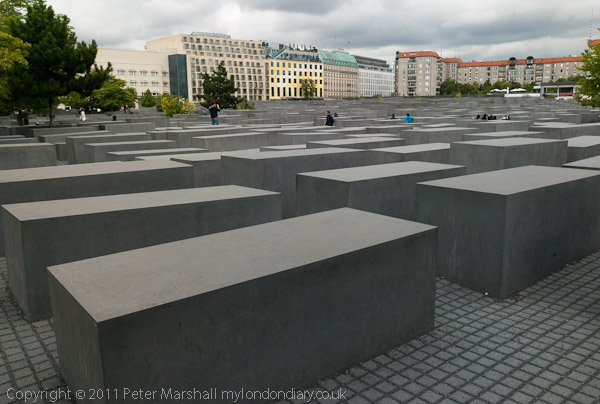
Denkmal für die Ermordeten Juden Europas — a Memorial to the Murdered Jews of Europe, designed by architect Peter Eisenman and engineer Buro Happold commemorates the six million murdered Jews, victims of the Holocaust. Three million of their names are listed and read out loud in an underground information centre below the site.
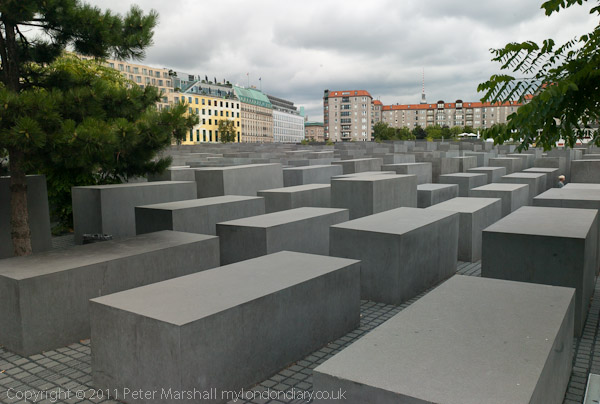
There are 2,711 concrete slabs or “stelae”, each 2.38 by 0.95m, and with varying heights from 0.2 to 4.7 metres, in long rows with walkways between in which you become overwhemlmed by the grey slabs as you walk further along each line. They get less regular as you walk further in, and some seem unfinished – and the massive concrete in some cracked up a year of two of the mouument being opened in 2005.
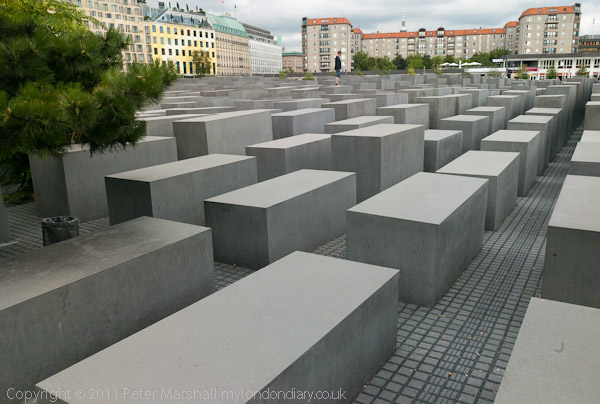
I found it a powerful experience, obviously resemembling a cemetery with the blocks as coffins or graves, and the light and shade on the grey blocks and your view of the sky – grey clouds while we were there. My photographs I think are rather superficial and fail to really show the depth of the experience. We had little time and the others were keen to get on, and I was rather overwhelmed.
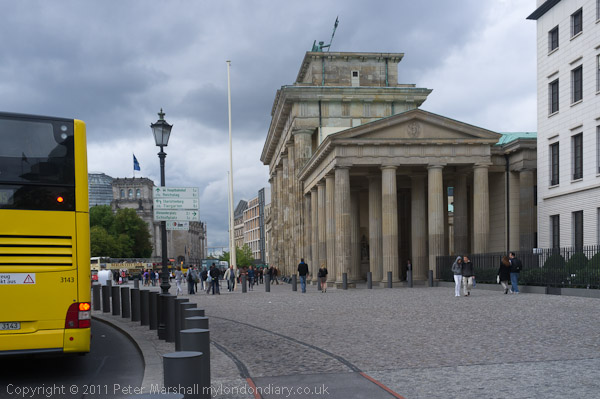
We walked on to look at some of the other familiar monuments of Berlin, including the Brandenburg Gate, used by the Nazis as a party symbol. It was built between 1788 and 1791, commissioned by Frederick William II of Prussia to represent peace, and designed by Carl Gotthard Langhans based on the gateway to the Acropolis, part of his desire to create ‘Athens on the River Spree’.
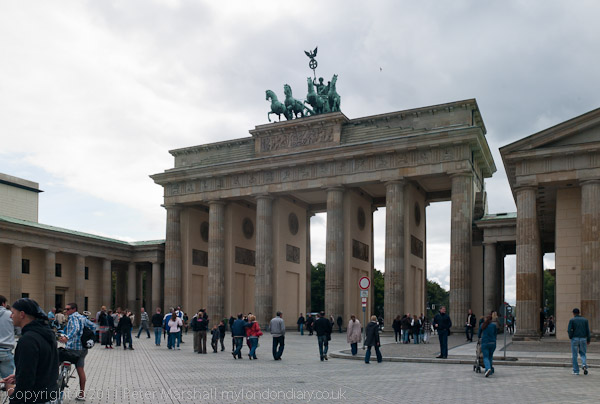
It was one of few buildings in the area left standing in the area at the end of the war, though damaged. East and West Berlin authorities worked together on its restoration, but the gate, just inside the eastern zone became one of the border crossings, but was closed in 1961 when the Berlin wall was built and did not reopen until December 1989. Since then it has been further restored.
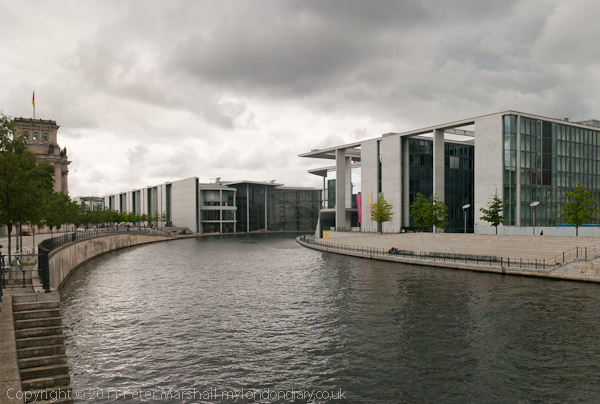
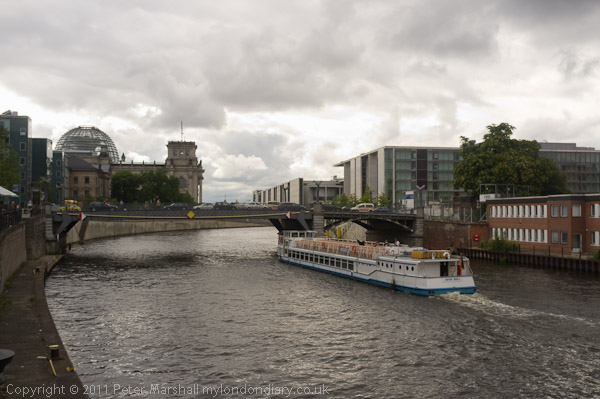
The Marshalls couldn’t leave Berlin without visiting the Marschallbrücke which crosses the Spree close to the various government offices. On the left is the end of the Reichstag Building where the Greman Parliament sits, and beyond it Paul-Löbe-House and across the river the Marie-Elisabeth-Lueders-Haus, the two designed as a unity by architecht Stephan Braunfels and symbolically linking (and there is also a bridge and a tunnel) the two halves of Germany across the Spree.
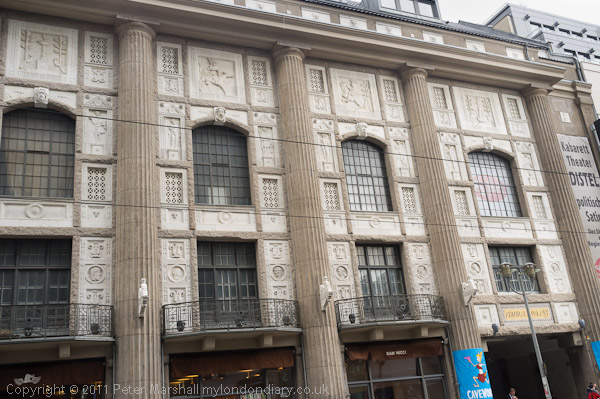
We walked east beside the river, where I made a picture of the Marschall Bridge and continued east to Freidrichstrasse where I took a quick snap of the remarkable facade of the Admiralspalast Theatre, opened in 1910.
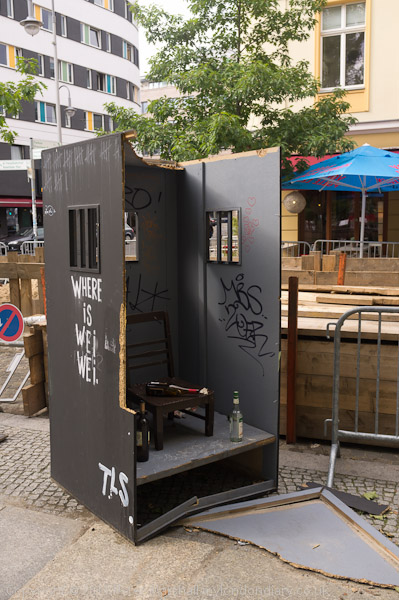
Where is Wei Wei.
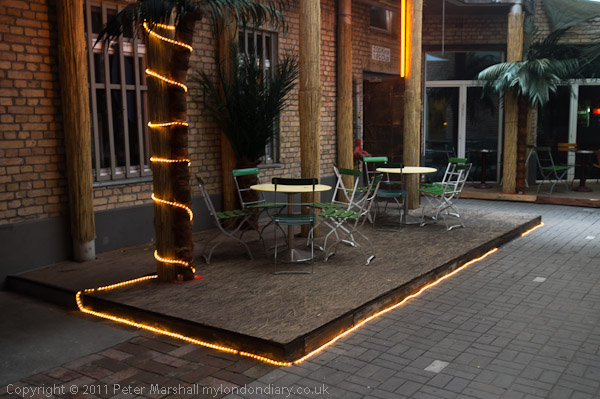
We continued east through various back streets, past art and bars.
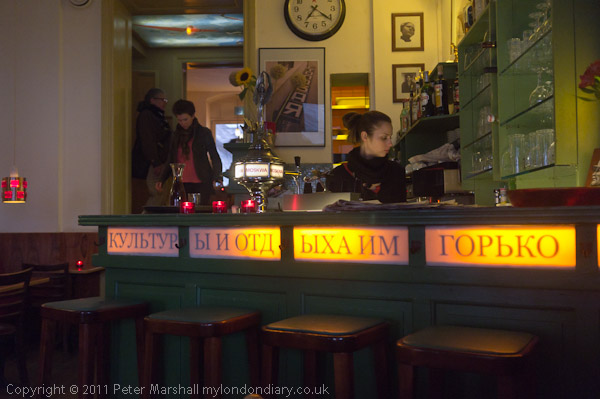
and eventually found ourselves eating and drinking in Moskwa.
The final episode of our stay in Berlin will come shortly.
______________________________________________________
There are no adverts on this site and it receives no sponsorship, and I like to keep it that way. But it does take a considerable amount of my time and thought, and if you enjoy reading it, a small donation – perhaps the cost of a beer – would be appreciated.
My London Diary : London Photos : Hull : River Lea/Lee Valley : London’s Industrial Heritage
All photographs on this and my other sites, unless otherwise stated, are taken by and copyright of Peter Marshall, and are available for reproduction or can be bought as prints.
To order prints or reproduce images
________________________________________________________